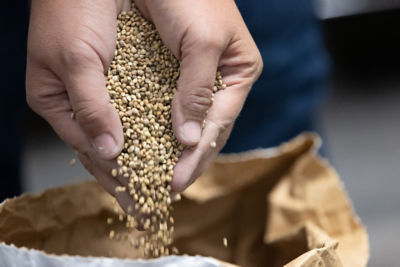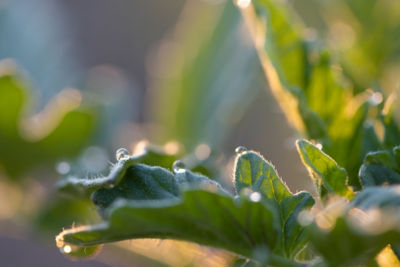Causal Agent
Alternaria cucumerina
Distribution
Worldwide
Symptoms
Alternaria leaf blight is a common disease on cantaloupe and of less importance on cucumber, watermelon and squash. Symptoms first appear on the upper leaf surface as small, circular, tan spots with white centers. These spots enlarge, turn light brown and form a slight depression. Small leaf veins within the spots darken, resulting in a netted appearance. As the spots enlarge on muskmelon and watermelon, concentric rings develop that are visible only on the upper leaf surface, giving the spot a target-like appearance. These circular spots can eventually affect the entire leaf. Defoliation may occur, resulting in sunburn damage to the fruit and may lead to a decrease in fruit soluble solids. Severely affected plants also are more susceptible to heat and wind damage. Infected fruit develop circular, brown sunken lesions. Fruit lesions may develop a dark olive to black-colored powdery mat on the fruit surface. Undetected fruit infection at harvest can result in later losses in transit or storage.
 Yellow halos surrounding leaf spots on melon leaves.
Yellow halos surrounding leaf spots on melon leaves.
Conditions for Development
Alternaria cucumerina survives in crop debris or on weeds and other cucurbit hosts. Disease spread can occur with rain, irrigation, wind, cultivation, equipment and field workers. This disease is favored by warm temperatures and moisture from dew, rain or overhead irrigation. Infection can be initiated with two to eight hours of leaf wetness, but as the hours of leaf wetness increase infection level increases. The frequency of rain and the length of dew periods play a greater role in disease development than the volume of rain that falls.
Control
Implement a preventative fungicide spray program. Employ other cultural control measures such as crop rotation (two years out of cucurbits), avoid overhead irrigation, thoroughly incorporate crop debris following harvest and implement a hygiene program for personnel and equipment. For some crops (e.g., cucumber), resistant varieties are available.




